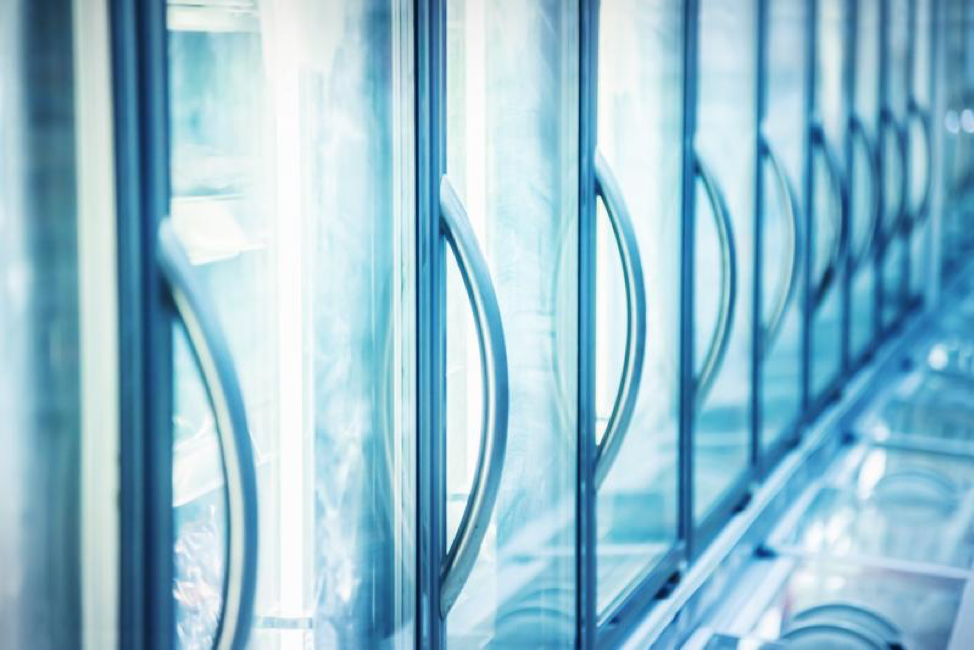Commercial refrigeration is very different from domestic refrigeration. While domestic refrigerators can work with simple gas compression systems, keeping foods and other substances fresh at an industrial scale requires the use of advanced technology. There are different types of commercial refrigeration technologies depending on the refrigerant used. The most common are ammonia, carbon dioxide, propane, CFCs and HCFCs, and ammonia/carbon dioxide cascade refrigeration. This article discusses the different technologies used in commercial refrigerations along with their benefits and drawbacks.
Ammonia Refrigeration
The use of ammonia as a refrigerant started in the 1870s. However, it was not widely embraced because chlorofluorocarbons (CFCs) were considered more stable and harmless. Nevertheless, as it was later discovered that CFCs pose a great danger to the ozone layer, more and more companies are switching to ammonia refrigeration. Below are some of the reasons why the use of ammonia as a refrigerant has gained popularity.
Advantages
Ammonia refrigeration contractors explain that it is energy-efficient. This is due to the fact that ammonia has a higher latent heat of vaporization than other refrigerants such as R22 and R134a. Ammonia, therefore, requires less energy than the other refrigerants to achieve a specific level of refrigeration.
Another advantage of ammonia refrigeration is low costs. First of all, ammonia is significantly cheap compared to other refrigerants such as Tetrafluoroethane (R134a) and Freon (R22). Further, due to the high latent heat of vaporization of ammonia, ammonia-based refrigeration incurs low electricity costs. Finally, compared to CFCs and HCFCs, ammonia requires narrower pipes thus using less space and driving down the valving costs.
The use of ammonia as a refrigerant is relatively safe. The pungent odor of ammonia makes it easy to detect leaks. Furthermore, it does not cause depletion of the ozone layer.
Disadvantages
Ammonia reacts with copper. It, therefore, cannot be used with copper pipes and in high concentrations, ammonia is poisonous.
Carbon Dioxide Refrigeration (R744)
Compared to CFCs, HCFCs, and ammonia, carbon dioxide is non-toxic, non-corrosive, non-flammable and does not affect the ozone layer. But those are not the only reasons why some businesses prefer R744 refrigeration systems.
Advantages
One of the main advantages of R744 refrigeration is that it allows the use of smaller compressors. For example, R744 heat exchangers can be six to eight times smaller than R22 heat exchangers and about five times smaller than R404a compressors. This advantage arises from the fact that carbon dioxide has a high vapor density that increases its volumetric refrigeration capacity. With R744 systems, you will use less space and incur low initial costs. The high vapor density of R744 also reduces the size of the pipes needed thus lowering the valving costs.
Disadvantages
Due to the high volumetric capacity, R744 refrigeration systems require special compressors. Moreover, the high operating pressure increases the probability of leaks.
Carbon Dioxide/ Ammonia (CO2/NH3) Refrigeration Systems
As this article explains, CO2/NH3 refrigeration systems are meant to exploit the advantages of both refrigerants. These systems use both CO2 and NH3 heat exchangers.
Advantages
Compared to ammonia-based systems, CO2/NH3 cascade systems have lower capital costs. This is because the use of CO2 for lower temperatures means smaller compressors, smaller pipes, and less insulation. Furthermore, at full load, the cascade system consumes less electricity per ton of refrigeration than ammonia-based systems. CO2/NH3 cascade systems, therefore, have lower operational costs
The use of CO2/NH3 cascade systems also lowers compliance costs. For refrigeration systems with an ammonia charge of more than 10, 000 pounds, you will need to make significant adjustments in order to comply with RPM and PSM requirements. The cascade system lowers ammonia charge. Furthermore, they can be designed with a specific ammonia charge.
For industries or retailers that handle food, the use of ammonia/carbon dioxide cascade systems comes with the advantage of minimizing the risk of contamination. Ammonia is only used in the machine room rather than in the entire facility.
Disadvantages
The operating pressure of the NH3/CO2 systems is much higher compared to ammonia-based systems. The cascade systems, therefore, require advanced safety measures. Furthermore, these systems are sensitive to moisture.
The complexity of designing and setting up the cascade systems increases the initial costs. The systems also require additional control mechanisms to run both ammonia and carbon dioxide heat exchangers. The maintenance cost of NH3/CO2 cascade systems is higher than that of ammonia and carbon dioxide systems.
Propane Refrigeration (R290)
Propane is a highly flammable refrigerant. The cost of setting up advanced safety mechanisms can overwhelm small and medium-sized business. Due to the high risks and costs involved, propane refrigeration is rarely used. It is mostly used in refineries.
CFCs and HCFCs Refrigeration
This technology involves the use of chlorofluorocarbons and hydrofluorocarbons. In the earlier days, these refrigerants were preferred because they are stable, and they have favorable temperature ranges. However, due to their destructive effect on the ozone layer, governments and businesses are cutting back on their use. It is likely that the CFCs and HCFCs refrigerants will be illegal in future.
If you are looking for more information on starting or improving your business, check out some of our other helpful articles like this one!
